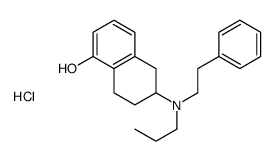Transient loss of dopamine autoreceptor control in the presence of highly potent dopamine agonists.
A Mao, KA Freeman, RJ Tallarida
文献索引:Life Sci. 59(21) , PL317-24, (1996)
全文:HTML全文
摘要
The concentrations of endogenous ligands generally remain in a bounded range around a basal level, a manifestation of control. The dopaminergic system is an excellent example of a control system in which a negative feedback signal is associated with receptor occupancy of a D2-like dopamine autoreceptor. A consequence of the control theory is that autoreceptor occupancy by an agonist results in dopamine levels below the basal, whereas similar stimulation by a dopamine competitive antagonist results in an increase of dopamine to levels above the basal. These consequences of control theory were tested and verified in the rat striatum by infusing graded doses of either the agonist, quinpirole, or the antagonist, sulpiride, into the rat striatum via a microdialysis probe and sampling dopamine and metabolite levels at various times after the start of infusion. Control was maintained even at the very highest doses of these compounds, i.e., striatal dopamine concentration rose in response to the antagonist and fell in response to the agonist. In contrast, administration of each of two high affinity dopamine agonists, 7-OH-DPAT and PPHT showed dose-dependent control only up to certain doses. Above these doses the dopamine concentration actually increased to levels well above basal, an indication of loss of control. These findings suggest that the control of this endogenous ligand does not extend to the very highest levels of autoreceptor occupancy.
相关化合物
| 结构式 | 名称/CAS号 | 分子式 | 全部文献 |
|---|---|---|---|
 |
(±)-PPHT盐酸盐
CAS:71787-90-1 |
C21H28ClNO |
|
Differential effects of dopamine D1 and D2 receptor agonists...
1995-04-01 [J. Pharmacol. Exp. Ther. 273 , 40, (1995)] |
|
Multiple fluorescent ligands for dopamine receptors. I. Phar...
1991-05-03 [Brain Res. 547(2) , 199-207, (1991)] |
|
Relations between the extracellular concentrations of cholin...
1997-09-01 [J. Neurochem. 69(3) , 1246-51, (1997)] |
|
Biphasic effects of dopamine agonist N-0434 on locomotor beh...
1993-04-01 [Pharmacol. Biochem. Behav. 44(4) , 865-8, (1993)] |
|
Adenylate cyclase from sea urchin eggs is positively and neg...
1992-12-01 [Exp. Cell Res. 203(2) , 491-4, (1992)] |